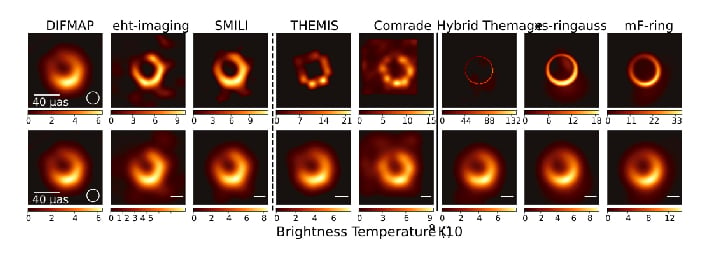Most Detailed Image Of The First Black Hole Ever Seen Proves Einstein Was Right

The 2018 images were part of a study recently published in the journal Astronomy and Astrophysics. It revealed a bright ring that was like the one detected in 2017 that surrounds a central deep depression, or, as predicted by general relativity, “the shadow of the black hole.” The study also points out that the brightness peak of the ring shifted about 30 degrees in the 2018 images, compared to the images in 2017. The researchers say this is consistent with their theoretical understanding of variability from turbulent material around black holes.
“A fundamental requirement of science is to be able to reproduce results,” explained Dr. Keiichi Asada, an associate research fellow at Academia Sinica Institute for Astronomy and Astrophysics in Taiwan. “Confirmation of the ring in a completely new data set is a huge milestone for our collaboration and a strong indication that we are looking at a black hole shadow and the material orbiting around it.”

One of the most notable parts of the new images, according to the researchers, was that the size of the black hole did not change between 2017 and 2018. However, the location of the brightness region around the ring did change in a significant manner. The study showed that the bright region rotated approximately 30 degrees counterclockwise, settling in the bottom right part of the ring at about the 5 o’clock position.
“The biggest change, that the brightness peak shifted around the ring, is actually something we predicted when we published the first results in 2019,” said Dr. Britt Jeter, a postdoctoral fellow at Academia Sinica Institute for Astronomy and Astrophysics in Taiwan. “While general relativity says the ring size should stay pretty fixed, the emission from the turbulent, messy accretion disk around the black hole will cause the brightest part of the ring to wobble around a common center. The amount of wobble we see over time is something we can use to test our theories for the magnetic field and plasma environment around the black hole.”
The EHT collaboration says that the array is improved each year, either with the addition of new telescopes, improved hardware, or additional observing frequencies. Perhaps with future improvements, new studies will be able to observe one thing the 2017 and 2018 observations could not, which is the jet emerging from M87*.

